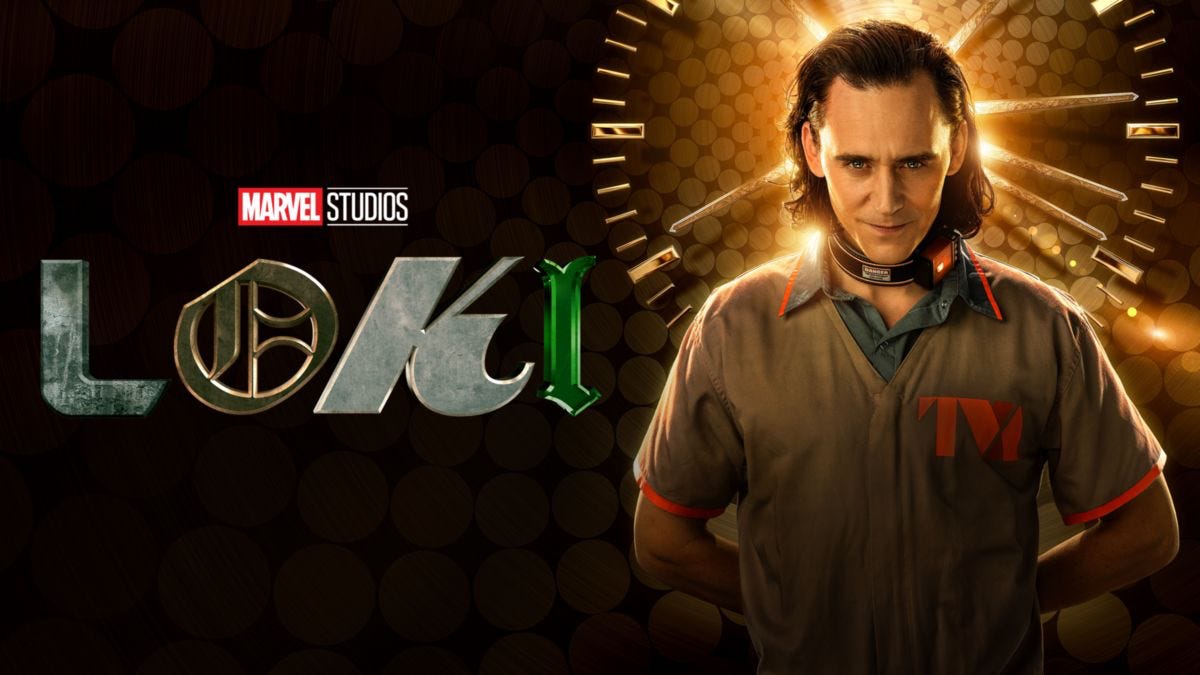Hi there! This is Younes from The Family.
Chasing Paper is a newsletter giving my perspectives on finance, strategy, tech & innovation - and how they interact. It’s aimed at CFOs and other people with entrepreneurial endeavors who are looking for tools and ideas to improve the handling of finances in their companies.
I’ve hit the pause button on content for a while now. However, this week and the coming ones, I have a few complex topics that I need to gain deeper understanding about, and I’d like to take this newsletter as an excuse/opportunity to explore them. Consider it a thought experiment. The format will likely be shorter, more unstructured than other Chasing Paper editions.
As you will see, those topics are pivotal to my firm’s current and future positioning - and as such, all your ideas and suggestions are welcome!
Enjoy!
I’ve recently started watching Marvel’s Loki on Disney+. The show is quite entertaining if you’re an MCU enthusiast (if you’re not, my guess is that it would be...difficult to follow). The plot revolves around a thought-provoking hypothesis: although there are multiple universes (multiverses), there is a single, sacred timeline determining them all. However, some errors sometimes slip through the cracks of the sacred timeline. They are called variants.
That, for the show, is when the drama kicks in, because it’s precisely what allows for Loki to understand he can exploit timeline variations to his own advantage. And for my purposes here, it’s when an interesting question arises: if market timing is everything, then surely building a time-variant business model is (i) difficult but (ii) very rewarding.
What I call a time-variant business model is a business abnormality, a model that should not have happened ; and yet managed to exist, thrive or succeed because it relied on favorable timing to market and exploited timeline variances. And very often those businesses are financial businesses.
I can think of one case, very close to home. My firm The Family is a result of what you could call a ‘startup ecosystem arbitraging scheme’. Back in 2013 when Alice, Oussama and Nicolas first envisioned it, the French startup ecosystem was nowhere near where it is now: it lacked capital, it lacked talent (both to create and join startups), and the level of entrepreneurial knowledge was low. But somewhere, on a different timeline, was a startup ecosystem that was thriving: Silicon Valley. What The Family did was to take advantage of its knowledge, network and connections from an advanced ecosystem as well as its understanding of local specificities and hurdles to create a unique model: a safe space for French entrepreneurs that could begin leveling the playing field by leveraging the best startup ecosystem out there. A lot of people called The Family an accelerator then. It was in fact a time-variant community, living in 2 realities at the same time.
The Rocket Internet model, as designed by the famous Samwer brothers, is another example of time-variance: replicating successful business models established in the US in emergent regions requires living in several realities at the same time.
Building such a model is difficult: not only does the playbook need to be honed and executed perfectly, but the model is also ephemeral by essence. Time-variant opportunities do not last forever. That is the reason why many time-variant business models falter.
And yet, many financial institutions started as time-variant models. One of the reasons why the Rothschild family has so many successful banking branches across the world traces back to when Mayer Rothschild decided to send his 5 sons across Europe to set up shop. The one rule was that they each should write to all the others daily. Having daily news from Frankfurt, London, Paris, Naples & Vienna was an incredible competitive advantage over other purveyors of capital, especially in times of war between European kings. They were able to master the time-variance of their individual universes.
More interestingly perhaps than their mere existence, how do time-variant businesses become forever institutions?
I’ll kill the suspense: I’m not sure. But I think it’s by embracing their business model’s ephemeral nature, exploiting existing time-variances to extract capital, and then reinvesting that capital in subsequent time-variances, staying a certain number of steps ahead of irrelevance as the normal course of time sets back in.
Where are the exploitable time-variances now? I think the global pandemic has created many, many fragmentations in our societies. Entrepreneurs everywhere, especially in emerging markets, are bursting with ambition but are still faced with lack of capital, lack of talent, lack of proper local infrastructure or education. In the meantime, many of those needed resources have become commoditized, available everywhere online, remotely. Managing to create a business model connecting those elements is a unique opportunity at exploiting a massive time-variance.
As Drake and Future put it: What a time to be alive!
Until next time,
Younes
If you enjoyed, share this newsletter and make sure to subscribe if you haven’t👇



I have been trying to do something like this as it would allow me to organize the whole thing. This is a very innovative idea that can have a lot of different types of implications.
Visit: https://allfreeincome.com/
Based on the examples > this looks more like "space-variant business models" and less like "time variant business model" IF one thinks of 'time & space'